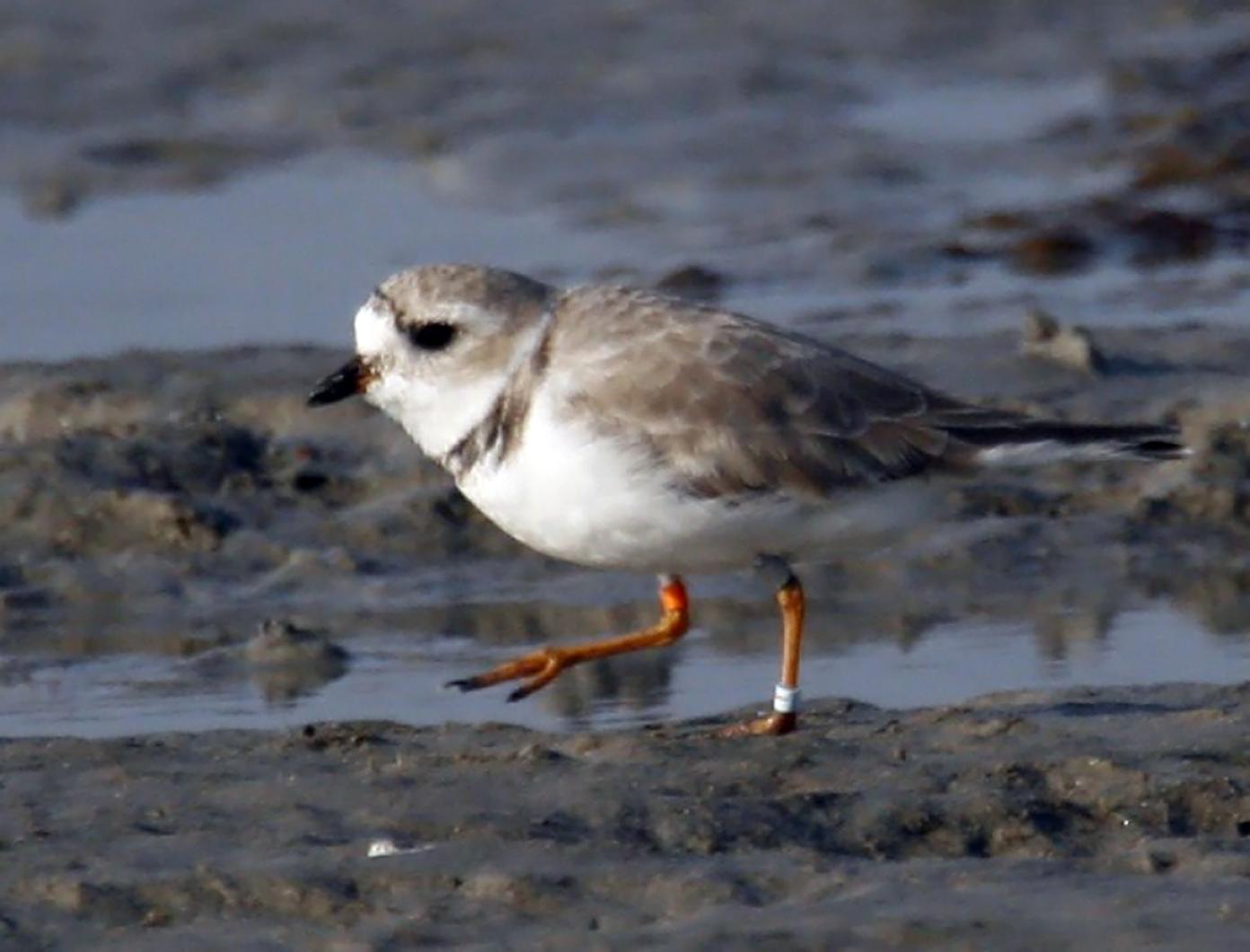The American oystercatchers and piping plovers are back on Island. These shorebirds are of concern wherever they are due to a combination of evils. The local Audubon Society in Martin County, Fla., asked me to help with a survey of piping plovers on a flat just inside the St. Lucie Inlet in Stuart, Fla. Unlike the Vineyard plovers, the Stuart piping plovers are not affected by over sand vehicles, skunks or raccoons. It is impossible for any of the above to ford the St. Lucie River. Instead the plovers are at risk of losing their habitat to winter residents who wish to augment their eroding beaches.
Our task was to determine if any piping plovers used the flats to feed or loaf and if so how many. Why, because the Army Corps of Engineers was asked to give a permit to an outfit which would suck the sand from the flat and pipe it over to the oceanside beach that was naturally eroding. If the piping plovers used that flat, we could suggest using sand from another area.
We had been out several times and had discovered that 13 piping plovers did indeed use the flat. We needed to have documentation and, lucky for Audubon of Martin County, Lanny McDowell came to visit bearing his camera. Lanny’s visit coincided with one of the worst northerly blows we had had all winter. We did not find the birds on the flat, but decided to venture into an area that afforded a lee. We not only found the piping plovers, but also an immature bald eagle, white ibis and a flock of mixed shorebirds. Lanny photographed the plovers and found that two of them were banded! One was color banded and the other a single Fish and Wildlife silver band. We never were close enough to read the numbers on the silver band, but did have the pattern of the color bands of the other. This color combination was sent out and we received a reply that “our” bird had been banded in Ludington State Park, in Ludington, Michigan, which is on the eastern shore of Lake Michigan.
The 13 piping plovers back on the flat they propose to dredge last week included the two banded birds. It will be interesting to see when they leave to head back to Michigan and maybe the Vineyard.
Bird Sightings:
Madeline (aka Cookie) and Arthur Perry spotted their and probably the Island’s first American oystercatchers on Eel Pond on March 14.
John Nelson walked from Red Beach in Lobsterville out to the point. There he spotted a piping plover on March 15. This would be the first for the Island and the state although one was seen at Provincetown on March 16.
Whit Manter saw a killdeer at Pond View Farm in West Tisbury on March 14.
Sue Silva, Whit Manter and Roy Riley are the osprey stars. Sue spotted the first osprey over the Mill Pond in West Tisbury on March 13. Whit Manter saw the second between Lucy Vincent Beach and the Allen Farm in Chilmark on March 14 and Roy Riley saw one, probably the same osprey Sue spotted, on March 15 sitting on a branch overlooking the newly released trout in the Mill Pond. You don’t suppose that osprey had been there before and knew when the trout were being released. Smart bird.
Sue and Woody Bowman report that they heard American woodcock near their Panhandle home in West Tisbury for the first time in about 10 years.
Luanne Johnson noticed that yellow-rumped warblers appeared at her feeder for the first time all winter on March 12.
Dale Carter noted that the two pairs of northern cardinals that have been pleasantly coexisting all winter in her Chappaquiddick yard are no longer doing so. The males are now fighting, no doubt to establish their breeding territories.
Rob Culbert spotted a pair of Barrow’s goldeneye off Lobsterville Beach on March 8.
Tim and Sheila Baird have been busy birding. On March 13 while driving around West Chop they had a red phase screech owl fly by their car. Their feeder was graced with its first female red-winged blackbird on March 15. March 16 the Bairds had three northern flickers and a sharp-shinned hawk at their Edgartown feeder. The sharp-shinned hawk reappeared on March 17, a nice adult plumage bird. The Bairds spotted a cock ring-necked pheasant at the Farm Institute, Katama and on both March 16 and 18 they spotted a very pale white barn owl on Atlantic boulevard in Katama.
J. Burris called to say he had spotted a snowy owl at Herring Creek, Katama on March 17. I was unable to reach him, but because the snowy owls have moved north, he probably spotted the pale barn owl the Bairds’ had seen.
Please report your bird sightings to the Martha’s Vineyard Bird Hotline at 508-627-4922 or e-mail birds@mvgazette.com.
Susan B. Whiting is the co-author of Vineyard Birds and Vineyard Birds II. She leads walks for the Chilmark Community Center and trips for Osprey Tours to Central and South America.





Comments
Comment policy »